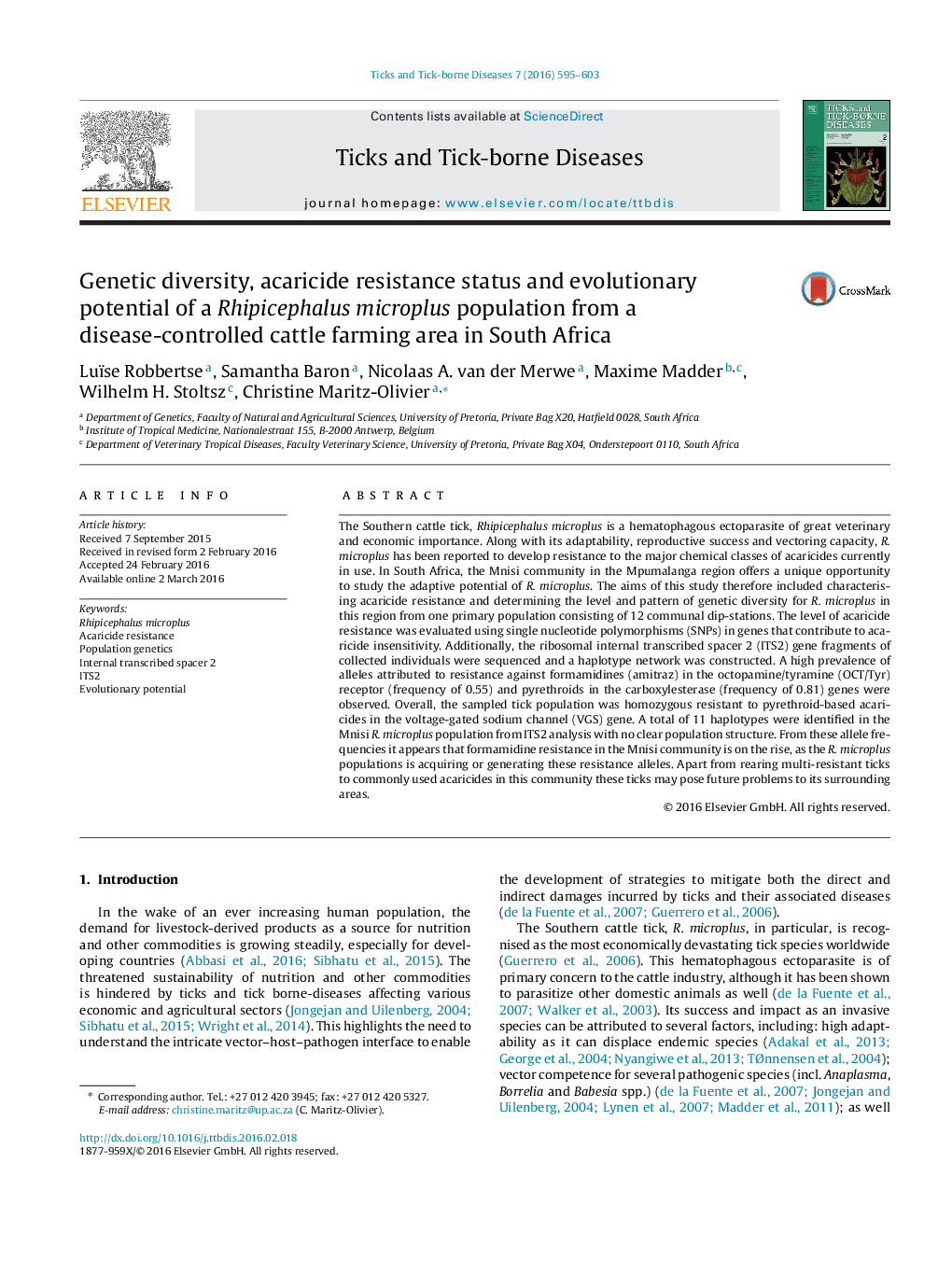| کد مقاله | کد نشریه | سال انتشار | مقاله انگلیسی | نسخه تمام متن |
|---|---|---|---|---|
| 5806993 | 1113101 | 2016 | 9 صفحه PDF | دانلود رایگان |

The Southern cattle tick, Rhipicephalus microplus is a hematophagous ectoparasite of great veterinary and economic importance. Along with its adaptability, reproductive success and vectoring capacity, R. microplus has been reported to develop resistance to the major chemical classes of acaricides currently in use. In South Africa, the Mnisi community in the Mpumalanga region offers a unique opportunity to study the adaptive potential of R. microplus. The aims of this study therefore included characterising acaricide resistance and determining the level and pattern of genetic diversity for R. microplus in this region from one primary population consisting of 12 communal dip-stations. The level of acaricide resistance was evaluated using single nucleotide polymorphisms (SNPs) in genes that contribute to acaricide insensitivity. Additionally, the ribosomal internal transcribed spacer 2 (ITS2) gene fragments of collected individuals were sequenced and a haplotype network was constructed. A high prevalence of alleles attributed to resistance against formamidines (amitraz) in the octopamine/tyramine (OCT/Tyr) receptor (frequency of 0.55) and pyrethroids in the carboxylesterase (frequency of 0.81) genes were observed. Overall, the sampled tick population was homozygous resistant to pyrethroid-based acaricides in the voltage-gated sodium channel (VGS) gene. A total of 11 haplotypes were identified in the Mnisi R. microplus population from ITS2 analysis with no clear population structure. From these allele frequencies it appears that formamidine resistance in the Mnisi community is on the rise, as the R. microplus populations is acquiring or generating these resistance alleles. Apart from rearing multi-resistant ticks to commonly used acaricides in this community these ticks may pose future problems to its surrounding areas.
Journal: Ticks and Tick-borne Diseases - Volume 7, Issue 4, June 2016, Pages 595-603